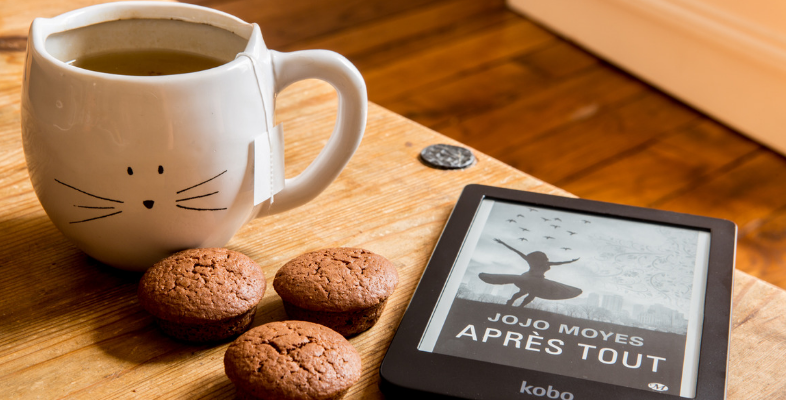
by guest bloggers
Rebekah Garrety, Rebecca Hoffman, & Autumn Groff
There are tons of different devices out there that let you access electronic books and audio books. But how do you decide what exactly you need? Click here to view a handy graphic to help with your decision making, and more detail about popular devices!
Purchasing electronics can be tricky. Here are some tips for navigating the language used by many retailers to describe their products:
What’s the difference between an “eReader” and a “tablet”?
Physically, both look very similar. They tend to be larger devices with no keyboard and few buttons. For the most part these are touchscreen, and run on one of two operating systems: Android or iOS.
What is an “operating system”?
An “operating system” is the software that the device used to run. All Apple devices (iPhone, iPad, iPod, etc.) run on iOS, while most other devices (Kindle, Samsung, etc.) run on an Android operating system. For the most part, either operating system will work for reading eBooks and listening to eAudios. However, if you have other Apple or Android devices, then it may be beneficial to stick with what you are familiar with, and what you prefer.
Does it matter what version of the operating system the device is running?
Yes! Operating System versions often have a huge impact on the actual capabilities of the device.
To make picking your device and deciphering the operating system easier, consider the type of screen you want.
If you want a black-and-white screen that is similar to a printed page, we’d recommend looking for a device that says it has an “e-ink” screen AND supports “ePub” format books (it can support other formats too, but make sure “ePub” is in the list if you want to be able to use library ebooks on it). “ePub” support allows for the transfer of books from our eMaterial lending platforms to your device! Please note, the Kindle Paperwhite DOES NOT support ePub formats.
If you want a color screen that is similar to a computer or smartphone screen, look for an Android device that is at least 4.4.2 or better. If going with Apple products, iOS 8 or better.
No matter what device you are looking at, make sure that “EPUB/ePub” format is supported. If it only shows AMZ, PNG or TIF format, you may be restricted to purchasing books from a particular website or vendor.
How much storage do I need?
When considering storage, consider your budget. Look for as much built-in storage as you can afford. 8GB will be fine if you will only read ebooks and never put any other applications on your device. 8GB is a pretty small storage allowance, and those GB will go by FAST. If you listen to audiobooks, we’d recommend at least 16GB—but 32 GB or more is better. It’s a bonus if the device allows for “Expandable” storage—but get as much regular storage as you can.
What is “expandable storage”?
If a device allows for “expandable storage” it means that it allows for an added memory card. These are optional, but are handy if you use up all of the internal storage on the device.
What about RAM?
RAM tends to not be as huge a factor in tablets as in computers. If the processor has 1GB or more of RAM, it should work pretty well. If you plan on doing a lot of things at once (or using a busy application like Facebook a lot), see if you can afford a device with more RAM available to avoid slowdown.
How big of a screen should I get? Do pixels matter?
Check out the screen size versus the overall dimensions. Screen size is listed as diagonal inches from corner to corner. By way of comparison, a regular paperback is about 7.5 inches diagonal; a hardcover book is about 11.5 inches on the diagonal.
Pixels matter… sort of. The higher the pixel count, the more fine-tuned the image will be. That said, after a certain point, the human eye can’t tell the difference. 1920 x 1080 is a pretty good benchmark to look for in a 10-inch tablet; for smaller tablets (7inches), 1024×600 is a good resolution.
What about Battery Life? Accessories?
Battery life is an important thing to think about. If you are planning to take your device on the go, it will be important to look for a device that has a longer battery life (8+ hours is generally pretty good).
Depending on the other abilities of your device, accessories may be available. These could include keyboards, covers, cases, styluses, and other things that make working on a touchscreen device easier. If you plan to only use the device for reading, these accessories aren’t as important as if you intend to use the device to surf the web or manage email. We recommend spending some time with your new device before researching possible enhancements!
Still a little confused? Check out our handy flowchart here!

